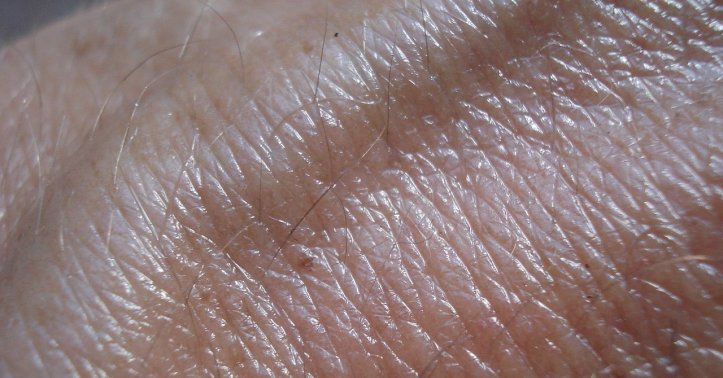
Comprehensive Guide to Identifying Skin Cancer Symptoms Early
Wondering if that odd-looking mole could be something serious? You're not alone.
Australia faces alarming statistics regarding skin cancer, which stands as one of the most widespread cancer types. Two out of every three Australians will receive a diagnosis of either melanoma or non-melanoma skin cancer during their lifetime.
Early detection of skin cancer leads to a high likelihood of successful treatment. If detected early, 90% of melanomas are treatable through surgical means.
The knowledge of symptoms and the right time to engage professional skin cancer detection services could mean the difference between life and death.
What you'll discover:
-
Different Types of Skin Cancer
-
Early Warning Signs Everyone Should Know
-
The ABCDE Rule for Melanoma Detection
-
High-Risk Groups: Are You More Vulnerable?
-
Self-Examination Techniques
Different Types of Skin Cancer
Not all skin cancers are created equal. Three primary skin cancer types require your attention.
Basal Cell Carcinoma (BCC)
Basal Cell Carcinoma represents the most frequently encountered type of skin cancer. BCCs typically appear as:
-
A shiny, pearly bump
-
A pink, red, or white growth
-
A brown, black, or blue lesion
-
An area with smooth scales that forms a distinct elevated border represents this type of skin lesion.
Basal Cell Carcinomas do not usually metastasize, but their unchecked growth can penetrate deeply into tissues and result in substantial damage.
Squamous Cell Carcinoma (SCC)
Squamous Cell Carcinoma (SCC) represents the second most prevalent type of skin cancer and usually manifests as:
-
A firm, red nodule
-
SCC appears as a flat area of skin that features scaling and crusting.
-
Old scars can sometimes develop new raised bumps or sores.
Without treatment, SCCs may metastasize to different body areas, so detecting them early is essential. Regular check-ups at a skin cancer clinic can help identify these lesions before they become problematic.
Melanoma
Melanoma stands as the deadliest skin cancer type while also ranking as Australia's third most prevalent cancer and the primary form affecting Australians aged 20 to 39.
Melanoma may develop across your entire skin surface or from a mole that undergoes malignant transformation. Melanoma may develop in your eyes and although uncommon, it can appear inside your body, including areas like your nose or throat.
What makes melanoma so dangerous? Melanoma spreads to other body regions very quickly when doctors do not detect it at an early stage.
Early Warning Signs Everyone Should Know
Early detection of skin cancer through knowledge of warning signs is vital. These warning signs must always be taken seriously.
-
A new spot on your skin
-
Any spot that stands out as unlike its neighboring skin marks
-
A wound that continues to be open after 4 weeks warrants medical attention.
-
A mole that has experienced changes in its dimensions or pigmentation
-
Moles that develop itchiness or show signs of bleeding should be monitored closely.
-
The spot presents a raised appearance and has a rough surface that feels scaly.
Every half-hour, a new case of melanoma diagnosis emerges in Australia. This statistic aims to emphasize the importance of vigilance rather than to scare you.
The ABCDE Rule for Melanoma Detection
The ABCDE rule provides a straightforward method to identify possible melanomas. Here's what each letter stands for:
A - Asymmetry. One half of the mole doesn't match the other half.
B - Border The edges are irregular, ragged, notched, or blurred.
C - Color The color isn't the same throughout and may include different shades of brown or black, or patches of red, white, or blue.
D - Diameter The spot is larger than 6 millimeters across (about the size of a pencil eraser), although melanomas can sometimes be smaller than this.
E - Evolving. The mole is changing in size, shape, or color.
Regular skin examinations combined with the ABCDE rule help you detect melanomas when they are easiest to treat.
High-Risk Groups: Are You More Vulnerable?
Several factors can drastically elevate your chances of developing skin cancer.
-
Fair skin: If you have fair skin, light hair and eyes, and burn easily in the sun
-
History of sunburns: Severe, blistering sunburns in childhood increase adult risk
-
Sun exposure: Regular unprotected time in the sun raises risk levels
-
Climate: Sunny or high-altitude locations expose you to more UV radiation
-
Moles: Having many moles or abnormal moles increases the risk
-
Family history: Risk increases if close relatives had skin cancer
-
Personal history: Previous skin cancer raises the risk of recurrence
-
Location: People in regional areas are 54% more likely to develop melanoma than city dwellers
-
Gender: Men face a higher risk than women
Individuals belonging to high-risk categories should prioritize skin examinations and protection from the sun.
Self-Examination Techniques
The best method to detect skin cancer early is through performing regular skin self-examinations. Here's how to do it properly:
What you'll need:
-
A full-length mirror
-
A hand mirror
-
A chair or stool
-
A hair dryer (to check your scalp)
Step-by-step guide:
-
Examine your face and scalp: Make sure to inspect your nose, lips, mouth, ears, and use a hair dryer to separate your hair to examine your scalp.
-
Check your hands and arms: Examine both sides of your hands and inspect spaces between fingers and underneath nails as well as forearms, upper arms, and armpits.
-
Examine your torso: Perform a thorough examination of your chest, abdomen, and back using mirrors to see areas you can't see easily.
-
Inspect your legs and feet: Conduct a thorough examination of your thighs as well as your lower legs and feet by checking the soles of your feet between toes and underneath toenails.
Conduct this monthly evaluation and document your findings. Photographing suspicious spots will help track changes during future examinations.
When to Seek Professional Help
Professional skin examinations remain essential even though self-checks play a critical role. See a doctor:
-
Seek medical advice if you notice any suspicious spots while examining your skin.
-
Medical attention is required when you possess a personal or family history of skin cancer
-
If you're in a high-risk group
-
A history of substantial sun exposure during your life requires attention.
Melanoma represents one of the cancers that patients can most effectively prevent.
Specialists conduct a thorough skin examination from head to toe during skin cancer detection services to identify suspicious spots using specialized tools that reveal features beyond human visual capacity.
Prevention Strategies That Actually Work
Effective skin cancer detection always starts with preventive measures. These methods have been verified to lower your skin cancer risk.
Sun Protection
-
Sunscreen: Use broad-spectrum, water-resistant SPF 30+ sunscreen. Apply 20 minutes before going outside and reapply every two hours.
-
Shade: Seek shade between 10 a.m. and 4 p.m. when UV rays are strongest.
-
Clothing: Wear long sleeves, pants, and broad-brimmed hats for excellent protection.
-
Sunglasses: Choose sunglasses that block both UVA and UVB rays.
Tanning beds produce dangerous UV rays, which elevate your risk for developing skin cancer. A tan can never be considered safe.
Wrapping Up the Essentials
While skin cancer presents a serious health threat, it remains highly preventable and treatable through proper measures. You can minimize your risk by recognizing warning signs and implementing preventive actions.
Remember these key takeaways:
-
Two-thirds of Australians receive skin cancer diagnoses in their lifetime.
-
Surgery can cure 90% of melanomas when detected in the early stages.
-
Utilize the ABCDE rule to assess your moles for abnormalities
-
Perform regular self-examinations
-
Consult a healthcare professional when you detect something unusual.
-
Protect yourself from the sun
The facts might be unsettling, yet knowledge equates to power. Your commitment to staying informed represents a critical action for your protection.
Whenever you question the appearance of a mole or skin spot, you should schedule a medical evaluation. Because skin cancer is serious, you should always take precautions rather than risk being sorry later.








